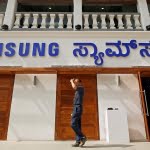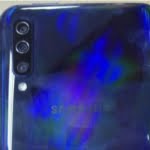
My fascination with cameras and binoculars began when I was about 10. I started assisting my dad in our chemist shop in Killarney for the late-opening on summer evenings. I suspect that my “assistance” was really just so that he would have some company. I’d dust and tidy some of the shelves, re-arrange postcards so that all of the same images were stacked together on the rack and, when I was older, I was allowed to work on the till.
The tourists, mostly Americans, drifted in and out on their way to or from the restaurants and bars in town. Some bought postcards and toiletries and we sold many pairs of binoculars and cameras.
I made up a sign for the shop window with: “Binoculars: Cheapest in Town” with a drawing of two little eyes and eyelashes drawn over the “o” in binoculars and I felt like I was well on the road to a marketing career.
My father came into his own when he launched into the sale of a camera with a customer. My first memories are of him talking them through how a box camera worked, then moving on to cameras that used 35mm rolls, where the film was spooled from one spool to another. (In order to wind on a film that had got stuck in a camera, for some reason he would put the camera and his arms up to his elbows inside a black zipped bag.)
Then came the magic Polaroid camera that developed photographs on the spot. As time went on, he began to sell instamatic cameras that used 126 cartridges, which you dropped into the back of the open camera. However, the camera that intrigued me most was the 110 pocket camera. It was a longish cuboid that had a slim cartridge that was easy to load. You could attach a cube for four flashes to the top of the camera. My Aunty Anna bought one of these coveted cameras from us.
When my 20 year old cousin Margaret came on holidays from the US with her friend, Aunty Anna gave her a loan of her camera before they took off on their cycling trip. When Margaret arrived back to Killarney a week later, she gave my dad her film to be developed. When they were developed, there were 24 very interesting photographs, all detailed studies of Margaret’s left eye. From then on my father was even clearer to potential purchasers as to which side of the camera the viewfinder was on, to avoid any future anatomical studies of the optical variety.
[“source=irishtimes”]










